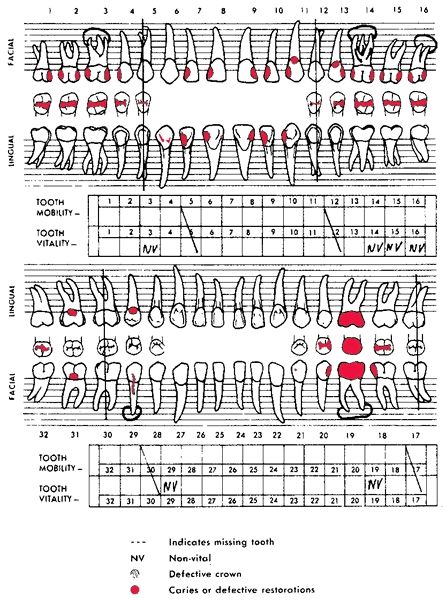Contents:


Companies use Profit & Loss Statement and others use “T Account” for these below mentioned reasons. Profit & Loss Statement/Account is prepared for two main reasons. An income statement offers a detailed account of how a firm’s net revenue is accrued and in turn, gets converted into net earnings. Pre-tax income or earnings before tax are ascertained by simply subtracting interest expense from a firm’s operating income.

Call it Profit and Loss Account or the Income Statement or the Statement of Profit and Loss, all are same. Other expenses – This subhead includes all the other costs that are not included under any head mentioned above. For example, for a manufacturer, cost of sales is the cost of its raw material, labor and direct manufacturing overheads incurred in the production of goods. But the same cost for a retailer or for wholesaler would be the purchase cost of its merchandise while for service-oriented businesses, this cost can be the cost of rendering services. Revenue – Revenue is the money received from the day-to-day operations of the company.
Switch to smart accounting!
The subdivision of this cost can be different for different people. Separate disclosure of profit before tax, tax expense and profit after tax from discontinuing operations. Gross Profit is defined as net sales minus the cost of goods sold.
Financial Statements: List of Types and How to Read Them – Investopedia
Financial Statements: List of Types and How to Read Them.
Posted: Sat, 25 Mar 2017 22:43:09 GMT [source]
Projections of all sources of income depend on the type of company. The Revenue section consists of all kinds of revenues generated by the company. The Profit and Loss Statement (P&L) is a statement which shows the total income and expenditure of a business. Earnings Per Share is one of the many indicators one needs to observe before investing. It indicates how much the company is earning per ordinary share. In our example, Dabur India Limited is earning Rs. 8.18 per share.
Part I – Form of Balance Sheet
Notably, it is the final total before achieving the net income of the company. A firm’s gross profit is computed by subtracting the cost of goods sold from sales revenue. It can be defined as the direct costs involved with the sale of products to generate earnings or revenue. Cost of goods sold is known as the cost of sales if the firm is service-oriented.
Comparative statements, often known as comparative financial statements, are statements of a company’s financial situation at different times. These statements aid in establishing a company’s profitability by comparing financial data from two or more accounting periods. A company’s income statement is used extensively in corporate finance, financial modelling and accounting.
Part II – Form of Statement of Profit and Loss
There are various different balance sheet styles to choose from, however the most common of them includes horizontal and vertical. It enables stakeholders to comprehend the entity’s business performance and liquidity status. Add up all expenditures made throughout the accounting period.
When this style is employed, spikes and dips in revenue and costs are instantly visible and may be explored by management. The report, for an example, might be used to identify patterns in sales from month to month that could be utilised to estimate future sales. Assists in determining changes in various components of costs and identifying the reasons for changes, which aids management in future decision-making. During this time, the gross profit ratio grew from 25% to 28%.
Both depreciation and amortisation can be categorised as non-cash expenses. Typically, they are created by accountants to help distribute the cost of capital assets like Property, Plant and Equipment. So, the external users of income statement i.e. investors, creditors and other lenders must make decisions about resource allocation as to where to put their money. They use the income statement to find out answers to the questions they may have about the future profitability of the business.
Analyzing a bank’s financial statements – Investopedia
Analyzing a bank’s financial statements.
Posted: Mon, 13 Sep 2021 07:00:00 GMT [source]
These may include investors, banks, board of directors, shareholders, competitors, etc. Non-profit organizations may instead prepare a statement of activities showing their source of funds and how they utilize them. Comparative income statements may also show you whether your expenditures and revenues are constant. Assume your Cost of Goods Sold increases from 25% to 40% of sales in three years.
While the income statement shows the profitability of a company, balance sheet shows the financial position of the company, i.e. how many assets and liabilities does the company have. Nonetheless, the income statement also has its share of limitations. For instance, the net income computed with the help of this financial report is not always accurate. It is mostly because several accounting treatments are based on mere assumptions and estimates. Consequently, business owners, financial analysts and investors must factor in the pros and cons of an income statement to ascertain accurate financial reports. Generally, companies tend to split-interest income and interest expense and record the same in the income statement separately.
These expenses include all indirect costs involved with running a business like – wages, salaries, office expenses, rent, insurance, depreciation and amortisation, etc. Some firm owners may decide to treat depreciation and amortisation separately under a different section. Usage accounting software has helped the business owners to frequently check the income statement and accordingly take corrective actions when required.
Surplus i.e. balance in Statement of Profit & Loss disclosing allocations and appropriations such as dividend, bonus shares and transfer to/from reserves etc. It is cash or cash equivalent unless it is restricted from being exchanged or used to settle a liability for at least twelve months after the reporting date. Monthly P&L Statement has similar headings as Yearly P&L Statement.
Here, the net income is nothing but an excess of revenue over the expenses. In other words, after deducting all the expenses and taxes from the revenue earned during the period, remaining is the net income from the business operation. Companies are required to submit profit and loss accounts under Schedule III of the Companies Act, 2013. A few other websites that you can visit to find the financial statements of Indian companies are Yahoo Finance, Equity Master, Marketsmojo, Marketsmojo etc.
Where the normal operating cycle cannot be identified, it is assumed to have a duration of 12 months. Sales Revenue, Service Revenue, Interest Revenue, and revenue from sources other such as returns on external investments of the company. Under the Revenue section, insert all kinds of revenues generated by the company.
- It facilitates trend analysis and is hence also known as Trend Analysis.
- The main difference is that the income statement consists of the actual figures whereas the projected income statement consists of estimated figures for the future period.
- An income statement of a company is also known as the statement of revenue and expense or the profit and loss statement.
- Marketing, advertising, and promotion expenses are often grouped together as they are similar in nature and relate to selling.
- It can be helpful to accounting professionals, audit supervisors, account managers, etc.
- Interest income and gains or losses arising from various investments are recorded here.
For investors – This statement will help them to decide whether to keep or sell the shares they own in the company. The investors also use the income statement to determine the ability of a company to pay dividends. Moreover, there have also been cases where the financial data reflected on these financial websites don’t match with that of financial statements declared by the company .
REPORTING OF SPECIFIED FINANCIAL TRANSACTIONS (SFT … – Tax Management India. Com
REPORTING OF SPECIFIED FINANCIAL TRANSACTIONS (SFT ….
Posted: Wed, 11 Jan 2023 08:00:00 GMT [source]
Final income statement format indias represent both the financial position of a business and also shows the profitability of the concern. The final Account is used by both the external and internal parties for various purposes. The Trading Account, Profit and Loss Account, and Balance Sheet all together are known as the final accounts. Trade Brains is a Stock market analytics and education service platform in India with a mission to simplify stock market investing.
It displays percentage changes in all income statement line categories, making top-line and bottom-line analysis and interpretation easier and more informative. Is an income statement in which different periods of the income statement are dealt with and compared side by side to allow the reader to compare prior year’s incomes and determine whether or not to invest in the firm. Dabur India’s depreciation expenses have increased by 24.62%. This reduces the net profit of the company which further reduces tax expenses. Revenue from operations are the funds earned from the normal business operations. The primary product/service offered by a company forms their main source of income.
- Similarly, the balance of ‘Reserves and Surplus’, after adjusting negative balance of surplus, if any, shall be shown under the head ‘Reserves and Surplus’ even if the resulting figure is in the negative.
- For example, Zen Phones, an electronic store selling phones and computers.
- Maintain provision and reserves depending on the financial health of the company.
- Here, the investors need to read at least 5-10 years of financial reports of the company in order to understand its performance, growth rate, trends, consistency, etc.
- Cost of goods sold is reported on a company’s income statement.
- This is to inform that Suvision Holdings Pvt Ltd (“IndianMoney.com”) do not charge any fees/security deposit/advances towards outsourcing any of its activities.
The cost of goods sold is any direct cost related to the production of goods that are sold or the cost of inventory you acquire to sell to consumers. It does not include overhead expenses related to the general operation of the business, such as rent. Cost of goods sold is reported on a company’s income statement. Featured here, the Income Statement for IES, showing the company’s financial performance from operating and non operating activities such as revenue, expenses and income for the last 4 periods . A T-shape profit and loss account has two sides – debit and credit. Usually, a trading account is created, followed by a profit and loss statement and it has two sides – Debit and Credit.
Typically, direct costs include – labour, raw materials, expense allocation, etc. Creditors – They use the income statement to determine whether the company will be profitable enough to repay their debts as they come due. This is calculated by deducting income taxes from pre-tax income. This is the amount that flows into retained earnings on the balance sheet, after deductions for any dividends. It is not uncommon for companies to call interest expense and interest income separately in the income statement so that reconciliation of the difference between EBIT and EBT is more accuarate. Depreciation, also known as amortization are non-cash expenses that are created by accountants to spread out the cost of capital assets such as property, plant, and equipment (PP&E).
T-shape Form T-shape form P&L account has two sides – Debit & Credit. Trading account is prepared first followed by Profit & Loss Statement. Total income will include a combination of both sales and operating income.
